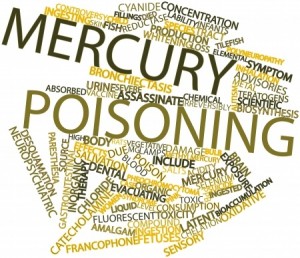Did you grow up on tuna sandwiches? Make sushi your regular lunch? Need amalgam dental fillings? Or were born before 1999? You may be have been exposed to mercury, actually I can guarantee you were exposed to mercury in one way or another in which case you may be harbouring a mercury toxicity. This toxicity could unknowingly be wreaking havoc on your body.
Do you or someone you know suffer from autism, chronic fatigue, digestive discomfort, food allergies, depression, anxiety, fibromyalgia, dementia, obesity, cancer or heart disease. If yes, you or someone you love may be quietly suffering from undiagnosed mercury toxicity.
Our society is slowly being poisoned by what is no doubt the most disease causing source of environmental toxicity to date. Now there are many forms of mercury however the one we are predominately exposed to is methyl mercury. Methyl mercury enters our body via a myriad of sources including deep ocean fish, dental amalgams, mercury vapour via the air we breathe, vaccines (pre 1999), batteries, red tattoo dye, fluorescent light bulbs, drinking water and thermostats just to name a few. What’s more is you absorb about 80% of the mercury you inhale from the air you breathe and nearly 100% of the mercury in your gut through fish, and once that mercury is in your body, it’s distributed to various parts including your kidneys, brain and even a growing foetus via the placenta. In fact, 15 percent of American women of child-bearing age have toxic levels of mercury in their blood (1). Now that’s scary thought!

Mercury toxicity can elicit very non-specific symptoms due to its potential to deposit almost anywhere in the body, some of these symptoms include allergic dermatitis, gingivitis, excessive salivation, acute renal failure, nausea, vomiting, diarrhoea, colic, nervousness, insomnia, inability to concentrate, memory problems, nerve damage, Parkinson’s Disease, tremor, ataxia (loss of balance), impaired hearing, tunnel vision, headaches, fatigue, anxiety, depression, low libido and fibromyalgia, the list is truly endless.
Environmental levels of mercury have risen significantly over the last 100 years, a 30-fold increase to be exact, 70% of which came from human sources such as coal-fired industrial plants, pesticides, PVC pipes and more. In a study conducted on the Faroe Islands people, who predominately consumed whale blubber, known to contain very high levels of mercury. The study found high levels of mercury in the umbilical cord blood which directly correlated with a reduced performance in neurologic testing in 917 mother-infant pairs.
Another study concluded that 71% of people with autoimmune diseases saw noticeable improvements after having their dental amalgams removed indicating low exposure to inorganic mercury may contribute to the development of autoimmune diseases (2). Another study found that dental amalgams in pregnant women may also contribute to the development of autism, the study found that mothers of 94 autistic children had statistically more dental amalgam fillings during their pregnancy than 49 mothers of healthy children (3).
What’s more is the American Dental Association still deems it safe to have dental amalgams, this is all the more alarmingly considering that the Environmental Protection Agency (EPA) stipulates that old fillings that have been removed from the body are toxic waste and must be disposed of accordingly. Meaning it’s ok to put the dental amalgams in your mouth but it’s not ok to throw them in the garbage.
Now the only way the body is able to rid itself of mercury is via faeces, urine, expired air and breast milk and whilst some of us are very good at detoxifying mercury some of us are very bad at it. The reason for this difference is down to a genetic variation. This particular gene is involved in the body’s production of glutathione, a potent detoxifier and antioxidant. Mercury can only be excreted from the body when it is bound to glutathione. When the body is unable to excrete mercury it stays in the tissues and over time slowly begins to accumulate within the body.
There are plenty of tests around for mercury, however blood and hair tests only give a partial picture as mercury is lipophilic meaning it concentrates in fatty tissues. The best way to accurately determine the total amount of mercury is to take a medication with sulphur molecules that bind to mercury; called DMSA or DMPS. This form of testing must be done under the supervision of your healthcare practitioner. You take one dose then do a follow up urine test at either 6 or 24hours.
Bottom line, mercury toxicity is BAD NEWS!
By Megan Maitland
BBioMedSci
References
- Schober SE, Sinks TH, Jones RL, Bolger PM, McDowell M, Osterloh J, Garrett ES, Canady RA, Dillon CF, Sun Y, Joseph CB, Mahaffey KR. Blood mercury levels in US children and women of childbearing age, 1999-2000.JAMA. 2003 Apr 2;289(13):1667-74
- Prochazkova, J., et al. The beneficial effect of amalgam replacement on health in patients with autoimmunity. Neuroendocrinology Letters. 2004; 25(3): 211-218.
- Holmes, A.S., et al. Reduced levels of mercury in first baby haircuts of autistic children. International Journal of Toxicology. 2003. 22(4): 277-285.
Aluminium in Deodorant Linked to Breast Cancer in New Studies
B Vitamins Slow Progression of Alzheimer’s
